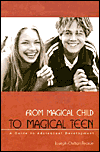
Black and white original image by mohamed Hassan (Colorized by InnerSelf)
In my book Magical Child, I described an American mother, Jean McKellar, who observed newborn Ugandan babies being carried in a sling next to the mother's breast. No diapers were used and, since the infants were always clean, Jean asked the mothers how they managed bowel and bladder movements. "We just go to the bushes," answered the mothers. But how, Jean asked, do you know when a tiny infant needs to go to the bushes? The astonished mothers replied: "But how do you know when you have to go to the bushes?"'
In Guatemala, mothers also carry their new infants in that manner, and if a newborn should still soil a mother after two or three days, the woman is considered stupid and a poor mother. Colin Turnbull, in his book The Forest People, tells how the mother anticipates the infant's needs and responds before the infant gives any detectable signs of being in need. And in that statement lies the heart of the issue of bonding.
These mothers have bonded with their infants. Delivery practices vary widely among cultures and it is hard to find a standard we can call natural, other than a minimum of interference. A natural birth, though, is one that allows bonding to take place. Bonding is an instinctual function directed from or through our mid-brain, following essentially the same form in all societies, and, like breathing, will manifest if allowed to do so.
Bonding gives an intuitive, extrasensory kind of relationship between mother and child. Bonding is a felt process, not available to discursive thought, language, or intellect. It is a communion that bypasses our ordinary reasoning mind. The mother senses the infant's need to evacuate the same way she recognizes her own bodily needs, but the communion of bonding goes beyond just physical processes.
Bonding, however, is biological. It involves a direct, physical connection we have between our mid-brains and our thumping hearts. Bonded persons connect on intuitive levels that operate below the level of ordinary awareness; the awareness resulting from the bonded state is qualitatively different from the awareness of attachment behavior. The bonded person's center of operations is in the heart, the mid-brain emotional center. In terms of physics, we can say the bonded person's awareness is rooted in a wave-form energy that underlies and gives rise to physical states. From such a precursive and intuitive position, the bonded person responds to physical stimuli in a qualitatively different way than does the attached person.
Lack of Bonding = Attachment
Attachment occurs when bonding fails to take place at birth. It can also occur at any point where there is a breakdown in the ongoing sequence of bondings that make up our development. Attachment arises from processes in the old brain and the lowest levels of the mid-brain, and thus the attached person can only relate through specific, overt physical signals.
He cannot perceive subtle or intuitive signals that are the precursors of physical experience and is always aware only after the fact. He is, you might say, locked into hindsight. He reacts to stimuli, since by the time he has registered and processed an event, the time for response to that moment is gone. He compensates by trying to anticipate, predict, and control events in the outer world.
The physical energies of the old brain are weaker than the powers of the emotional mid-brain with its heart connections. This means that the attached person is left unaware of an inner power, has no trust that his needs will be met, and so moves aggressively to seize and possess. Vulnerable to an unpredictable physical world, the attached person attempts to incorporate into his ego defense the events, persons, and objects of his outer world. He treats the other person as an object for domination or as a device in his protective strategems. The attached person lives like an armed crustacean eternally on the alert.
Learning is a process of movement from that which is known into that which is unknown. The bonded person can make such a movement because his orientation is based on the non-physical realm of relationship that underlies and comes before all physical events. So any event fits the bonded state and can call forth a response, as opposed to a reaction. Bonding provides a capacity to flow with events on a precursive level. The attached person attempts to analyze the upcoming event ahead of time, predict the probable outcome, and try to enter into the flow to alter it on behalf of a supposedly preferable outcome. Since attachment behavior is always aware after the fact, this intellectual meddling is disruptive, always too late to alter what has taken place, and gets in the way of what should take place next.
The attached person attempts to incorporate the unknown back into the known, to squeeze experience back into a tight frame of stable reference, which is always sensory-motor and tangible to the senses. The underlying, inherent essence or pattern of events is relational; it is, so to speak, wave-form rather than particle-form, abstract rather than concrete. The attached person fails to develop the ability to integrate the relational patterns into his interpretation of his world, and learning is difficult.
The bonded person can allow integration into wider circles of possibility for he has an intuitive sense of the underlying, inherent possibilities within situations. The bonded mother is in touch with the precursive, intuitive state and meets needs ahead of time. The bonded person assumes the unfolding moment will meet all needs and is thus open and receptive. This bonding function is the creative principle that holds a diverse creation together. Bonding is displayed from the appearance of the first unit of matter, the smallest sub-atomic particle, on up through galaxies and universes and our own brain/minds.
Bonding Begins In Utero
Bonding begins between mother and infant in utero. By birth, these bonds are well established, but they must then be confirmed and re-established after delivery, to integrate the new psyche into its new surroundings — which is the function of the bond. All bonding must be established before it is needed and confirmed at the time of need. Consider bonding to be a bridge between the known and the unknown. The bridge must be thoroughly anchored within the known ahead of time. And, before it can bear traffic, the bridge must be anchored on the other side as well. Then integration from the old into the new can take place.
If this confirmation of the bond at the point of need, in the new terrain, does not take place, the new psyche will have no choice but to try to incorporate the new experience back into that which it knows. In the case of an infant's birth, this means relating all new experience back to the uterine experience rather than bringing that experience forward into the light of day. This regression leads to attachment behavior. For instance, the attached infant's fists will remain clenched — a delivery behavior — for many weeks after delivery. In the same way, the attached child will later cling physically to the parent, in fear of loss of contact, and will not freely explore the world. The bonded child's relations are on the deep intuitive level not subject to time and space, and he will range far afield.
Reprinted with permission of the publisher,
Park Street Press. ©1995,2003. www.InnerTraditions.com
Article Source:
From Magical Child To Magical Teen: A Guide to Adolescent Development
by Joseph Chilton Pearce.
 Though first written in the mid 1980s, the message of From Magical Child to Magical Teen is even more compelling and helpful today--especially for those who live with and work with adolescents. Drawing on the stages of development outlined by Swiss biologist Jean Piaget and the brain research of neuroscientist Paul MacLean, Pearce demonstrates how nature has built into us an agenda for the intelligent unfolding of our lives. He offers a powerful critique of contemporary child-rearing practices and a groundbreaking alternative to existing perspectives on adolescence so we can unleash our greatest potential, as well as that of our children, in order to experience our fullness in the manner nature intended all along.
Though first written in the mid 1980s, the message of From Magical Child to Magical Teen is even more compelling and helpful today--especially for those who live with and work with adolescents. Drawing on the stages of development outlined by Swiss biologist Jean Piaget and the brain research of neuroscientist Paul MacLean, Pearce demonstrates how nature has built into us an agenda for the intelligent unfolding of our lives. He offers a powerful critique of contemporary child-rearing practices and a groundbreaking alternative to existing perspectives on adolescence so we can unleash our greatest potential, as well as that of our children, in order to experience our fullness in the manner nature intended all along.
Info/Order this book. Also available as a Kindle edition.
About the Author
 Joseph Chilton Pearce is the author of the best selling Magical Child, The Crack in the Cosmic Egg, Evolution's End, and The Biology of Transcendence . For over twenty-five years, he has taught about the changing needs of our children and the development of human society.
Joseph Chilton Pearce is the author of the best selling Magical Child, The Crack in the Cosmic Egg, Evolution's End, and The Biology of Transcendence . For over twenty-five years, he has taught about the changing needs of our children and the development of human society.



























